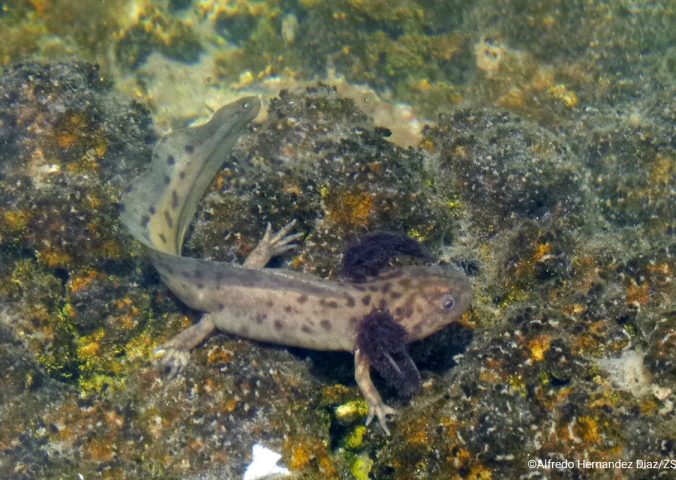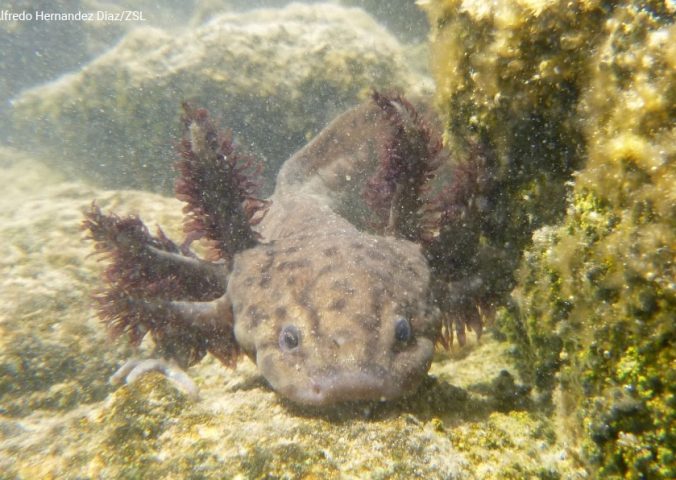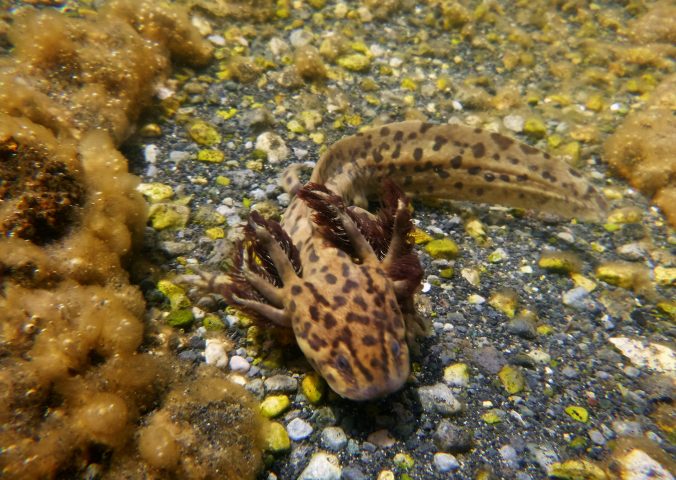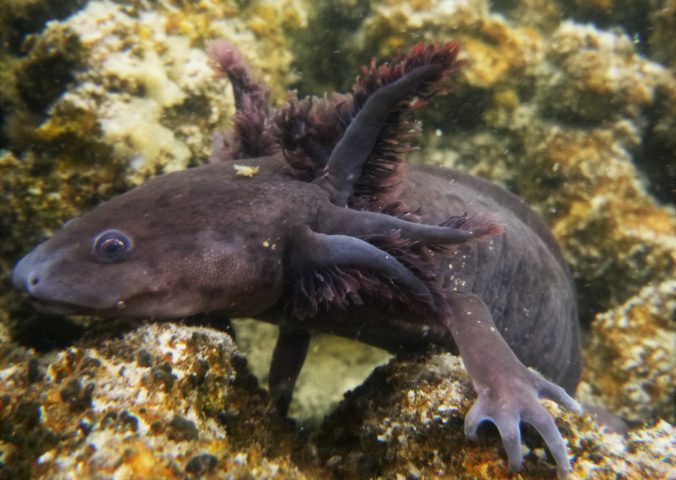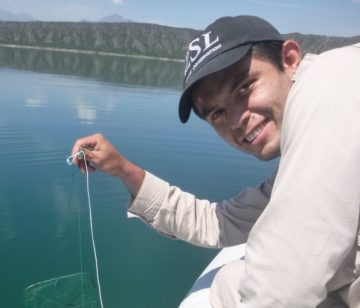About
Taylor’s salamander exhibits some incredible features, such as being able to live in salt waters with such high salinity that it would kill most other amphibian species!
The salinity of Laguna Alchichica, where this species lives, is well above the maximum level tolerable to amphibian eggs and embryos. Another unusual feature this species has is that it has a ‘neotenous’ life, whereby it retains its juvenile characteristics throughout life, never developing into an adult. However, Taylor’s salamander is able to achieve reproductive maturity whilst still in its larval form.
This salamander will eat almost anything that can fit in its mouth, including all aquatic vertebrates and invertebrates. Taylor’s salamander belongs to the family Ambystomatidae, which is one of the most primitive lineages of salamanders. Ambystomatid salamanders diverged from all other salamanders over 150 million years ago, in the Late Jurassic. This is around the same time kangaroos and humans last shared a common ancestor!
Taylor’s salamander is listed as Critically Endangered by the IUCN Red List, as the species occurs in an area less than 20 km². The most serious threat to this species is water extraction, diversion and pollution. The water is often extracted for irrigation and drinking water for the expanding population, and it is feared that continued extraction will lead to the extinction of this species. Fortunately, attempts to introduce fish to the lake have failed due to the extreme salinity.
- Order: Caudata
- Family: Ambystomatidae
- Population: Rare
- Trend: unknown
- Size: 15-20cm
EDGE Score
Distribution
This species is found in Laguna Alchichica, eastern Puebla, Mexico at 2,290 metres above sea level.
Habitat and Ecology
This species lives permanently in water and it lives and breeds in the lake that it was born. It is often found deep in the water

